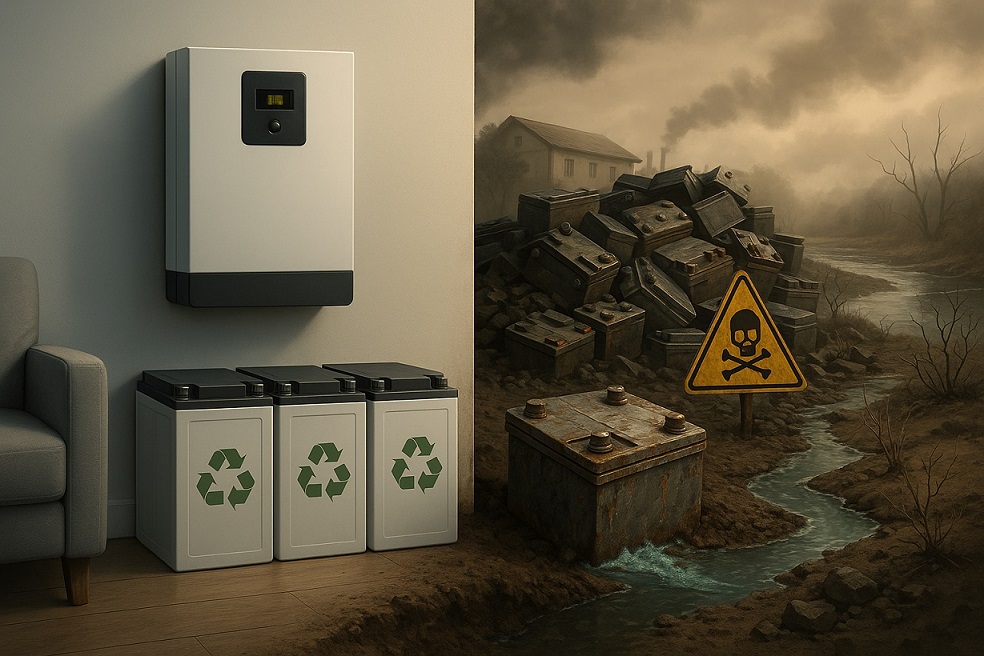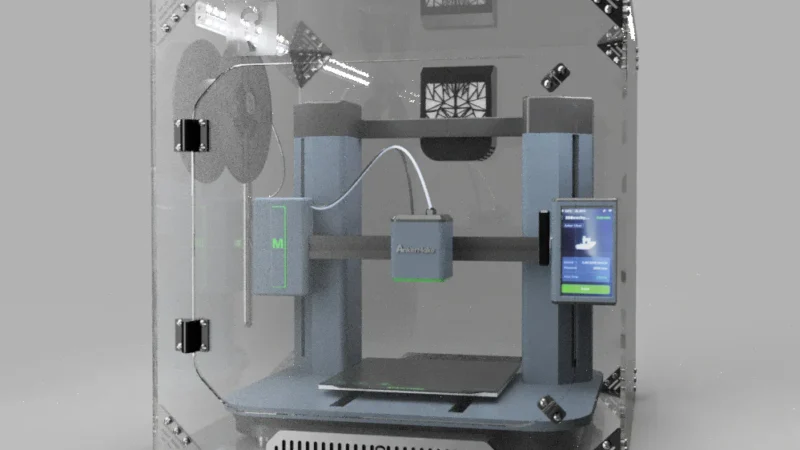The Hidden Impact of Backup Batteries on the Environment

Let’s be honest — most of us don’t give much thought to what powers our homes when the lights go out.
We flip a switch, the inverter kicks in, the fan keeps spinning, and life goes on. Whether it’s your house, a small store, or even a clinic — backup batteries have become essential in places where power cuts are part of life. They’re reliable, quiet, and usually hidden somewhere you never think to look.
But just because they’re out of sight doesn’t mean their impact is invisible. In fact, backup batteries — especially the lead-acid kind — carry a hidden environmental burden that we rarely talk about.
Let’s take a closer look at what these batteries are really doing behind the scenes — and what smarter, cleaner options are available.
The Most Common Battery Isn’t the Cleanest
Across much of the world, including India, the go-to battery for backup systems is the traditional lead-acid battery. It’s been around for over 150 years. People trust it. It’s cheap and available on nearly every corner.
But here’s the thing: it’s also one of the dirtiest types of batteries out there.
Lead-acid batteries are filled with — no surprise — lead, a toxic heavy metal, and sulfuric acid, which is corrosive and dangerous. If a battery leaks, breaks, or isn’t properly disposed of (which happens more often than we’d like to admit), that lead and acid can find its way into soil, groundwater, and eventually the food chain.
And when the average lifespan is just 2 to 3 years, you start to see the bigger picture: millions of short-lived batteries piling up every few years, many of them not recycled safely or at all.
What Happens When a Battery Dies?
Here’s where things get even more concerning.
Many batteries — especially in rural areas or unregulated urban shops — end up in informal recycling centers. These aren’t equipped with proper protective gear, ventilation, or even basic waste management. Workers, often poorly paid and poorly informed, manually crack open batteries to salvage lead plates.
They melt the lead in open pots. The fumes are inhaled. The acid is dumped nearby or absorbed into the ground. Children sometimes help. Nobody talks about it.
And this isn’t an isolated case. This is how a massive chunk of old batteries are recycled in many parts of the world.
Manufacturing Adds to the Problem
Even before a battery reaches your home, the environment has already paid a price.
Mining lead is energy-intensive. Manufacturing these batteries requires high-temperature processes that emit greenhouse gases. And because lead-acid batteries are heavy, transporting them adds fuel consumption and emissions into the mix.
Then, once the battery fails (which doesn’t take long), the entire cycle begins again.
So… What’s the Alternative?
This is where newer technologies come in — and honestly, they’re overdue for mass adoption.
Lithium batteries, especially Lithium Iron Phosphate (LiFePO₄) types, are now widely used in electric vehicles, solar setups, and home inverter systems. And for good reason:
- They last much longer — often 8 to 10 years or more.
- They’re more efficient, meaning more usable power and less energy loss.
- They’re cleaner — no lead, no acid, and minimal emissions over their lifecycle.
- They’re lighter, making transport easier and reducing fuel usage.
More importantly, they generate far less waste, and recycling programs are improving as lithium use expands.
For inverter systems and solar storage, inverter lithium batteries have become a preferred choice. They’re smart, low-maintenance, and increasingly affordable when you factor in their long lifespan.
It’s Not Just About the Battery — It’s About the System
Switching to lithium doesn’t just change the battery — it changes the entire energy story.
A lithium inverter battery charges faster, holds a charge longer, and supports deeper discharges without degrading quickly. That means fewer power interruptions and less strain on the battery over time.
It also means fewer replacements, less scrap, and a smaller environmental footprint over the long run.
What You Can Do
If you already have a lead-acid battery running your home, don’t panic. You don’t need to toss it out immediately. But when it’s time for a replacement, ask yourself a few questions:
- Can I switch to a lithium-based inverter battery this time?
- Is there a trusted seller offering recycling or take-back services?
- What kind of lifespan and warranty am I getting?
And if you do dispose of your old battery, make sure it’s done responsibly. Many sellers accept old units and route them to safer recycling channels.
Final Thoughts
Backup batteries are part of modern life — especially in regions where electricity isn’t always dependable. But we can’t keep ignoring the hidden costs tied to our power comfort.
Every time we replace a short-lived, toxic battery with a smarter, cleaner alternative, we’re making a small but meaningful impact.
And when millions of homes make that same choice? That’s no longer small.
It’s time we power our homes without poisoning the planet in the process.
Read more technology posts like this on Get Top Lists.



